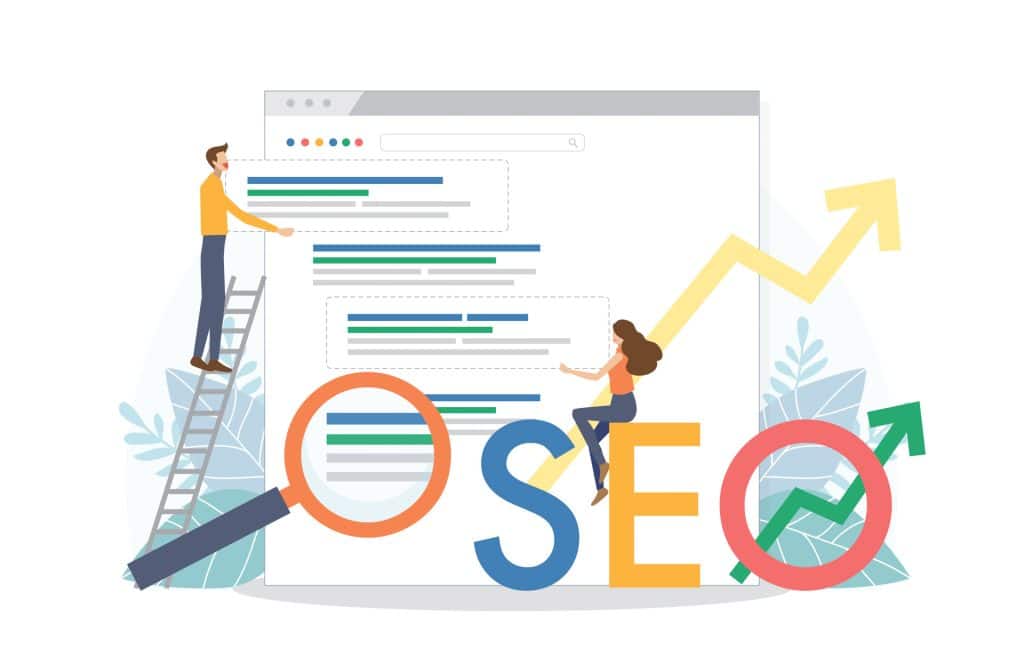Have you felt like your SEO (Search Engine Optimisation) strategy is not driving the results you hoped for? If the answer to that is yes, we suggest looking at the 4 pillars of SEO to help you drive the results you are trying to achieve
The 4 pillars of SEO are:
- On-Page SEO
- Off-Page SEO
- Technical SEO
- Content
Understanding these pillars and applying them to your current strategy can help simplify your SEO process and help you grab that top spot on your search engine results pages (SERPs)
Pillar 1: On-Page SEO
On-Page SEO refers to optismisations that take place on your website. On-Page SEO helps you ensure that your website is easy to use and provides value to users, which in turn sends positive signals to search engine that help you rank better. On-Page SEO involves optimising elements such as Keywords, URLS, Title Tags & Meta descriptions.
Keywords:
Keywords are words and phrases that your audience searches for online when they are looking for your business, and they are key for a successful SEO campaign. Luckily, there are multiple keyword research tools to help you find high-quality keywords for your business.
URLs:
When writing your URLs, make sure they tell users (and search engines) what your page is about, as this impacts your rankings. You should aim to keep your URLs short and include any relevant keywords that explain the topic of your page.
Title Tags:
Your title tags are the first things user see when skimming through the SERPs. Your title tags should be able to grab users’ attention and help search engines understand the context of your page.
Meta Descriptions:
Meta descriptions don’t have a significant role in your rankings, but they do have an impact on whether users will click on your website or not. For every page that you have on your website, you should have a meta description that provides a short summary of the content on your page. You should also aim to keep your descriptions below 160 characters.
Pillar 2: Off-Page SEO
Off-Page SEO includes optimisations that occur outside of your website. This involves earning links from other websites, shares on social media, and any other mentions of your website across the internet.
Off-Page SEO is important because search engines take your website’s perceived authority into account when determining rankings. Your authority is determined by whether search engines and users view your business as the expert in the field.
Pillar 3: Technical SEO
Technical SEO refers to optimisations that make your website easier for search engines crawlers and website visitors to use. It looks at optimising the back-end elements of your website such as page load speed, mobile friendliness and navigation.
Mobile Friendliness
Did you know that over 55% of website traffic comes from mobile devices? With mobile traffic only increasing, it is essential that your website is mobile friendly. By implementing responsive design, you can ensure that your website displays and functions correctly for users no matter what type of device they are using.
Page Load Speed
Your page load speed has a huge impact on users – even a difference of a second determines whether they will remain on your website. This also impacts your rankings on the SERPs. Search engines and users like quickly loading websites, which is why page load speed is an important ranking factor. To check your current website load speed, you can use Google’s PageSpeed Insights (https://pagespeed.web.dev/) which will tell you your website load speed and suggest ways to improve.
Pillar 4: Content
You might be familiar with the phrase “content is king.” Well, in the world of SEO, it is the key to unlocking more traffic, leads and conversions for your business.
Content is the most important part of your website. It tells users who you are, persuades them to act, keeps them on the page, and inspires them to share your website with others. From a technical perspective, writing content provides more opportunities to rank on SERPs by building pages that use your most important keywords.
Before writing your content, make sure you do your keyword research, that your content is unique and provides value to users, and that your content satisfies user search intent. For example, if someone is Googling ‘how to fix a dishwasher’, is that what your page is telling them how to do?
Conclusion
The 4 pillars of SEO allow businesses to address SEO strategically and also make the most out of it. Each pillar consists of its own to-do list and, if implemented properly, can increase the success of your website.
Keep in mind that SEO is a journey and not a quick fix. The purpose of SEO is to ensure that search engines can understand your pages and assess the quality of your website in order to show it to the kind of users who are most likely to enjoy your content, and that can take time. Don’t worry, you’ve got this.





